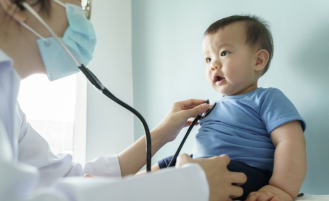New Technology for Diabetes Self-Care
In order to assess glycemic control and determine treatment decisions, those living with diabetes need to monitor their blood sugar, or glucose, levels. Monitoring is essential to diabetes management, and the necessity for it has been known for thousands of years. In fact, papyrus documents dating back to 1550 BC show methods Egyptians used for determining glucose levels.
Over time, the methods for checking glucose values have evolved. Initially, values were checked in urine until the Ames glucometer, the first commercial meter available for personal use, came along that checked glucose through blood and became the standard method.
From smartphone apps to insulin pumps that utilize artificial intelligence in determining individualized basal rates throughout the day, new advancements in diabetes self-care can help those with both type 1 and type 2 diabetes more easily manage glucose levels, determine insulin dosing and reduce the risk of complications.
Smartphone Apps
There are many apps you can download on your smartphone that may be used to:
- Determine insulin dosing.
- Track blood glucose, activity, foods eaten.
- Provide insight as to patterns (activities, foods eaten and blood glucose).
- Count carbs.
- Allow data to be shared between patients and their family, friends and providers.
- Provide reminders/prompts for activity goals, when to take medication, check glucose.
Be sure to discuss using any app with your healthcare provider prior to usage.
Continuous Glucose Monitoring
Continuous glucose monitoring (CGM) provides real-time glucose values that are checked every five minutes. In addition to glucose value, you may see rate and direction of change as well program alerts for low/high and rise rate/fall rate. These details can help you make decisions related to food, activity and medicine. The data provided by CGM allows patients to proactively manage their glucose values rather than need to treat low or high glucose vales when they occur.
Insulin Pumps
Traditional pumps deliver insulin as programmed preset rates determined by prescribing provider. The user announces pre-meal glucose as well as carbohydrates to be consumed, and the pump will then direct the user how much insulin to deliver or “bolus.” The user then selects deliver bolus at which time they will receive an insulin dose to provide coverage for the meal as well as any correction necessary for pre-meal glucose level.
Insulin pumps consist of a reservoir filled with rapid-acting insulin connected to an infusion set that connects to the body and an internal catheter in which insulin is infused into the body. The most recent advancements in insulin pump therapy are the Artificial Pancreas, Hybrid Closed Loop Models. These pumps have an algorithm within the pump which automate basal rate delivery every five minutes relative to sensor glucose and active insulin in the form of bolus insulin previously delivered.
Tubeless Insulin Pumps
There is a tubeless insulin pump on the market that connects to the body with an internal reservoir filled with insulin. It’s waterproof and can be worn up to three days, providing 72 hours of continuous insulin delivery. It connects with a personal diabetes manager that looks like a smartphone, which is used to program the pump.
Questions to Ask Your Healthcare Provider
Before choosing the device that’s right for you, here are some sample questions to ask your healthcare provider:
- Does the system require calibrations?
- Can I dose my insulin off sensor value, or do I need to check my blood glucose?
- How often do I need to change my sensor?
- Can I share my data?
- Does the system have alarms/alerts?
- Where can I wear the sensor?
Overlake offers one-on-one education as well as two-part classes to help people learn practical skills to manage diabetes, including medication, meal planning, glucose monitoring and more. Classes are taught by certified diabetes educators. Please see your healthcare provider for referral. Learn more about diabetes education at Overlake, or call (425) 688-5111.









